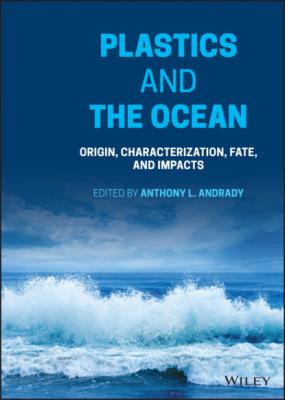Plastics and the Ocean. Группа авторов
Чтение книги онлайн.
Читать онлайн книгу Plastics and the Ocean - Группа авторов страница 46
 Thomas (2003)
Thomas (2003)
Data on toxicity of the newer nanoscale inorganic fillers are well under way. Titanium oxide nanoparticles, smaller than 100 nm in diameter, may be toxic to aquatic organisms because of their bioavailability (Sharma 2009). Suspensions of CB nanoparticles causes oxidative stress and activates lysosomal biomarkers in the digestive gland of mussels (Canesi et al. 2010), but the extent to which nanoparticles leach out of polymer nanocomposites is unknown. Estrogenicity of BPA and NP is well documented, but more recently, immunotoxicity their has also been observed in fish (Canesi and Fabbri 2015; Rastgar et al. 2019; Servos 1999). Benzotriazole UV stabilizers changed many immune response genes in zebrafish brain, liver, and embryos, as revealed by transcriptomics (Li et al. 2020). As toxicological tests become more sophisticated, such as rapidly advancing omics research (Liu et al. 2020), and our understanding of chronic, chemical mixtures, and multigenerational effects grows, and toxicological effects may be observed at even lower concentrations.
Table 2.7 Plastic additives that are endocrine‐disrupting compounds.
| Additive class | Chemical | Endocrine‐disrupting action |
|---|---|---|
| Plasticizers | Phthalates | Anti‐androgenic |
| Flame retardants | PBDEs | Thyroid disruption |
| Flame retardants | HBCDs | Thyroid disruption |
| Antioxidants | Nonylphenol | Estrogenic |
| Monomers | Bisphenol A | Estrogenic |
| Monomers | Styrene | Inconclusive |
| Multiple | Cd, Pb, Zn | Multiple |
| UV stabilizer | Benzotriazoles | Thyroid disruption |
For ideal risk assessments, the doses, route of exposure, and species used in toxicity tests must be relevant to environmental exposures. Many studies use doses far higher than those found in the environment (Brehm and Flaws 2019). These tests may miss sublethal, chronic effects or U‐shaped dose responses. Toxicology studies on marine species are rare in the literature. Studies that use rats and mice are common and important for assessing mammalian toxicology, but are not relevant to most marine species. The use of freshwater model species, such as D. magna and zebrafish, is more relevant but may not always be the best surrogate for marine organisms (Duran and Beiras 2017). For example, toxicity thresholds of BPA and NP spanned two to three orders of magnitude across saltwater species alone. Current regulatory standards for admissible concentrations in water are often based on freshwater organisms and may not adequately protect marine organisms (Duran and Beiras 2017). More testing is needed on model and nonmodel marine species, like the studies of Duran and Beiras (2017) and Delorenzo et al. (2008).
A common method for testing the toxicity of mixtures of plastic additives is to expose cells or organisms to leachate from plastic products. Sometimes, but not always, the chemicals are identified in the leachate to understand which could be causing the toxicity. For example, the leachate from three polymers (PVC, PET, and polybutylene adipate co‐terephtalate) in seawater was tested for in vitro estrogenic activity (Kedzierski et al. 2018). Microplastics